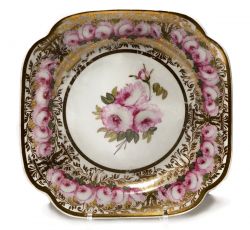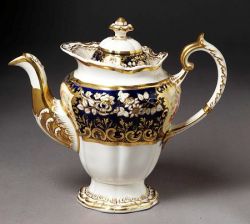- History
- Pottery
- Industry
Spode and Felspar Porcelain
|
In 1821 Josiah Spode II added another product to the Spode line: Felspar Porcelain. Spode used felspar in the body of his bone china as a purer replacement for Cornish or china stone. It helped the raw materials of the porcelain recipe fuse at a lower temperature without distorting the body. The result was a white, very glassy "china." Soon felspar was the latest craze in porcelain. It was ideal for making fashionable dinner and dessert wares. No doubt the glassiness of the body glittered in candlelight, making an evening dinner table even more festive.
|
Felspar Porcelain
|




